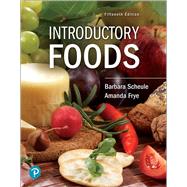For courses in introductory foods, nutrition and dietetics, family and consumer education, and culinary arts management.
A market-¿leading introduction to all things food
Introductory Foods is a practical, market¿-leading introduction to the fundamental principles of food preparation. It explores food science and technology, consumption trends, safety issues, government regulations, and the role of food in culture and health. A scientific approach to examining the ingredients and techniques used in food service environments makes this a well-rounded resource for courses with food preparation labs. The 15th edition makes food and its science more relevant to the lives of today’s college students, engaging them in discussions of topics such as farm-to-table, commercial and processed food, and vegan food products.










